A Guide to Tattoo Pain Levels
Tattoos have become one of the most popular body decorations in the world. However, these permanent skin modifications can make people feel different levels of pain during the tattooing process, which may depend on a series of factors.
5-Minute Crafts has created this guide to help you figure out how much it would hurt to get a new tattoo, how to prepare for it, and what to expect during the healing process.
A. Factors that may affect pain level
1. Gender
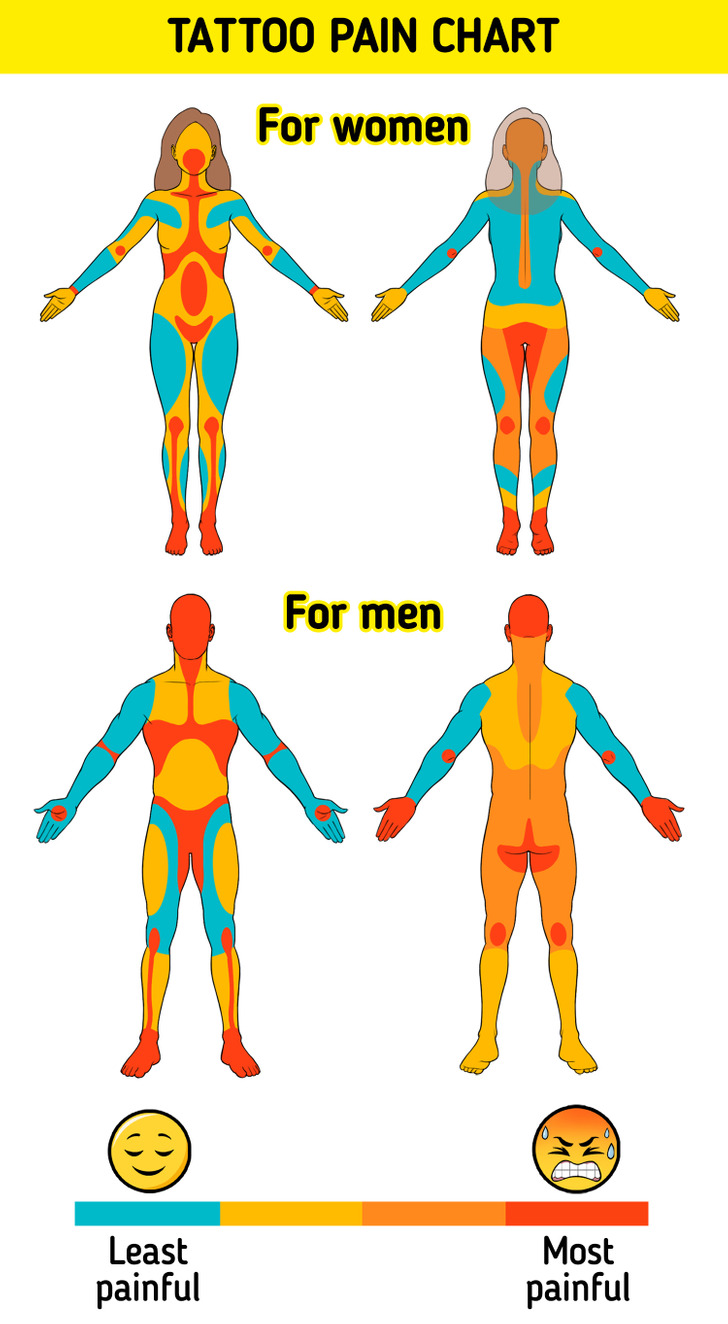
2. Tattoo placement
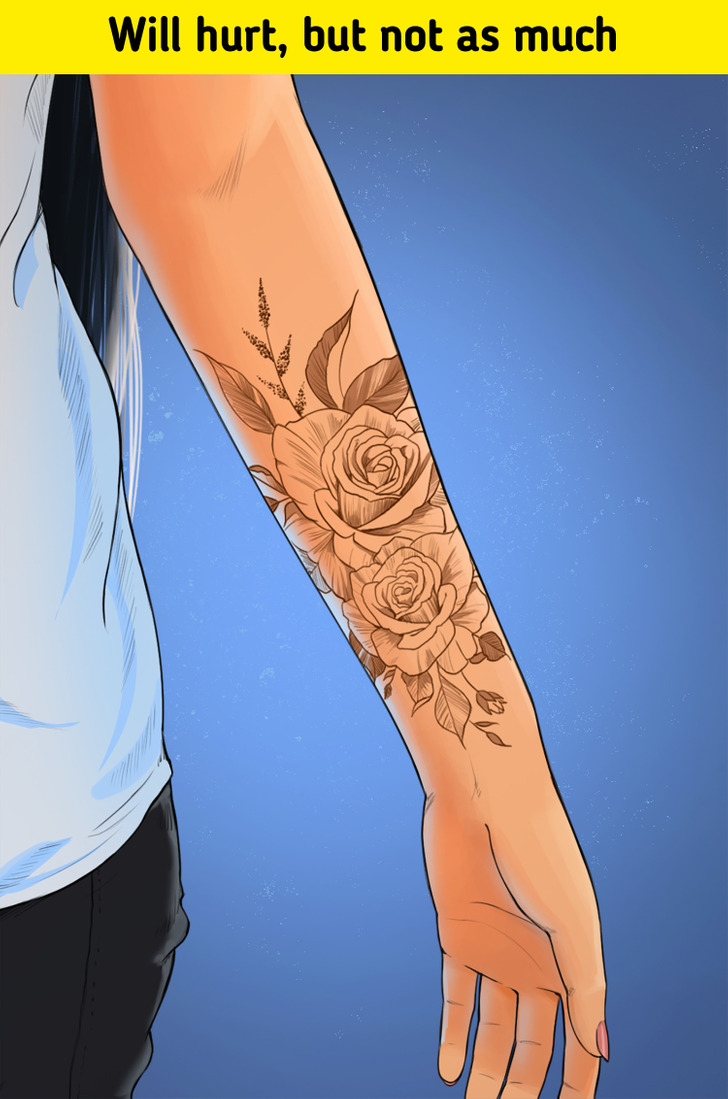
Even though there is no scientific research that states which areas will be the most and least painful when getting a tattoo, the consensus among people in the tattoo industry is that the least painful places are those with the fewest nerve endings, the thickest skin, and the most fat, like:
- Forearms: they have thick skin and plenty of muscle. Therefore, you may feel low to low-moderate pain in this area.
- Upper outer thigh: this part is covered with fat and doesn’t have many nerve endings, which makes it a good spot to get a tattoo. Here most people feel low to low-moderate pain.
- Calves: there is a lot of muscle and fat on the calves, and there are only a few nerve endings. You may feel a low to low-moderate amount of pain in this area.
- Outer shoulders: they have a thick layer of skin and few nerve endings. Here, you may feel low to low-moderate pain.
- Outer bicep: there is a lot of muscle and there aren’t many nerve endings. So, getting tattooed in this area may make you experience low to low-moderate pain.
- Upper and lower back: these areas have thick skin and few nerve endings. Therefore, the amount of pain in these parts may be low-moderate to moderate. Keep in mind that, when getting tattooed here, you may feel uncomfortable when sleeping during the first few days.
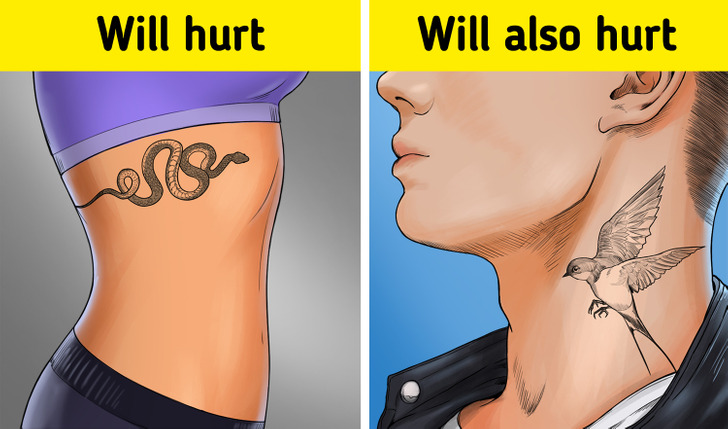
On the other hand, the most painful spots to get a tattoo are those with many nerve endings, the least fat, thin skin, and that are close to bones, like:
- Rib cage: it has very thin skin and there’s not much fat. Therefore, you may feel severe pain here.
- Neck and spine: these spots are very sensitive and tattooing them can cause a lot of pain.
- Shins and ankles: the ankle and shin bones are just beneath a thin layer of skin, which can make you experience severe pain.
- Groin: this area has a considerable amount of nerve endings to which needles can cause a lot of irritation. If you get tattooed here, you may feel high to severe pain.
- Elbows and kneecaps: your bones are right there under your skin. Therefore, the vibrations over them while getting a tattoo can lead to high to severe pain.
- Hips: this area can be especially painful if you are very thin and don’t have much fat around your hips. This happens because the hip bones are just under your skin.
- Feet, toes, hands, and fingers: tattoo needles can cause painful spams when coming into contact with the nerve endings in your hands and feet. Moreover, the skin covering these areas is very thin.
- Inner bicep: skin on this part can be soft and loose, which can cause high levels of pain. However, muscles in this area can help you minimize the amount of pain.
- Stomach: the amount of pain here can depend on your shape. For instance, people with looser skin on the stomach tend to experience more pain than people with tighter skin over the same area.
3. Previous experience
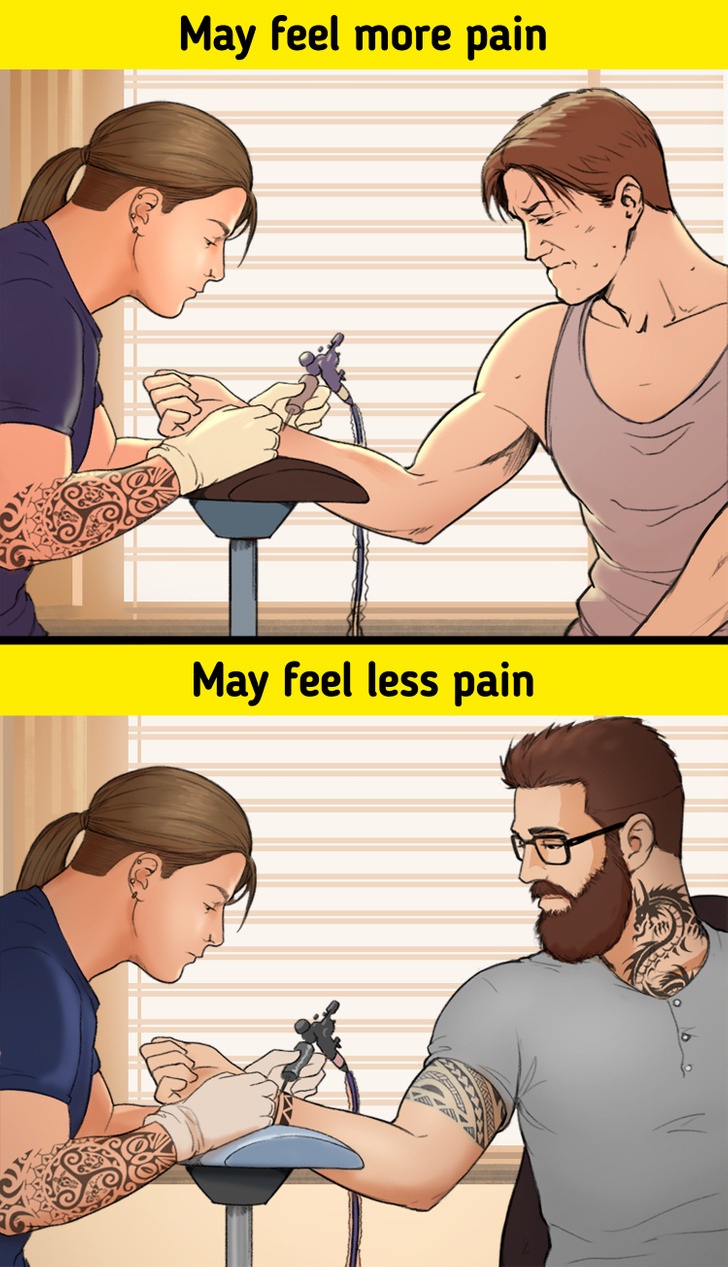
People who have had tattoos in the past may be able to manage pain in a better way compared to those who haven’t. This happens because the first group’s experience with tattoos may help them have a better idea of what they will feel during the procedure, leading to a more relaxed attitude and an improved response to pain.
4. The tattoo style
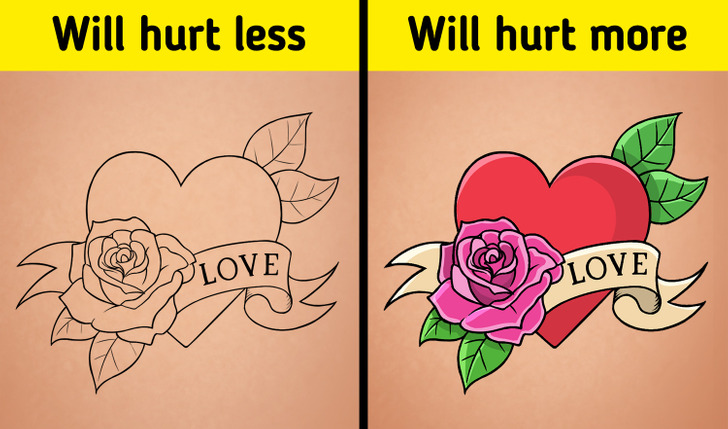
Pain level will also be affected by the type of tattoo you’re getting. For instance, if your tattoo is heavily filled and has very thick lines, it’s likely that it will hurt more than a piece with fine lines. In simple words, complex pieces can be more painful as they require more needlework.
B. Things you can do to reduce pain when getting a tattoo
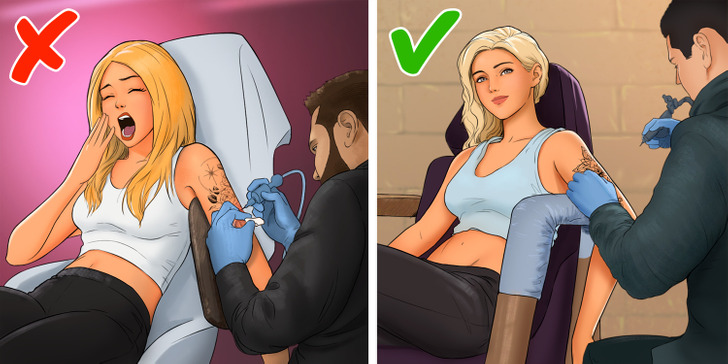
Getting your skin tattooed can make you feel different sensations related to pain. However, you can consider these tips to reduce pain and make this procedure as comfortable as possible:
- Avoid getting a tattoo if you’re sick as this will increase your sensitivity to pain. Moreover, the healing process will take longer if your immune system is not at its best.
- Choose a tattoo artist with a lot of experience. They are likely to be more delicate while working on more sensitive spots.
- Get enough sleep before your session. This will help you cope with pain.
- Have a meal to prevent low blood sugar levels. These can heighten pain sensitivity. However, it’s not advisable to eat before a stomach tattoo.
- Drink plenty of water. Since getting a tattoo on dry skin can be more painful, it’s a good idea to stay hydrated.
- Consider skin-numbing creams. These can help you feel less pain during the session. You can ask your artist to recommend one of these products.
- Keep yourself distracted. Listen to music, bring a friend if you’re allowed to do so, or ask your artist whether they’re open to conversation so that you can talk to them during the procedure.
- Dress comfortably. Choose loose clothes, especially for the area where you’re getting your new tattoo.
C. What to expect during the healing process of a tattoo
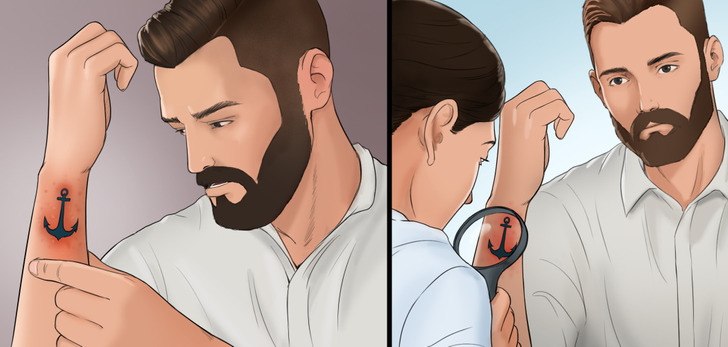
After your session, expect to feel the following in the tattooed area:
- Days 1 to 6: Soreness and swelling. You may experience moderate to severe pain, similar to sunburn or bruising.
- Days 7 to 14: More itchiness and less soreness. You may feel a burning sensation on your tattoo, which is normal.
- Days 15 to 30: Significantly less pain and itchiness.
Keep in mind that the healing time for your tattoo will depend on its size and placement. However, it can take up to 3 weeks for the outer layer of your skin to heal, and up to 6 months for the deeper layers.
❗ Once healed, your new tattoo should not hurt. Visit a dermatologist if pain continues, or if there’s redness or warmth in the area. This will help make sure you’re not going through an allergic reaction and ensure that you don’t have an infection.